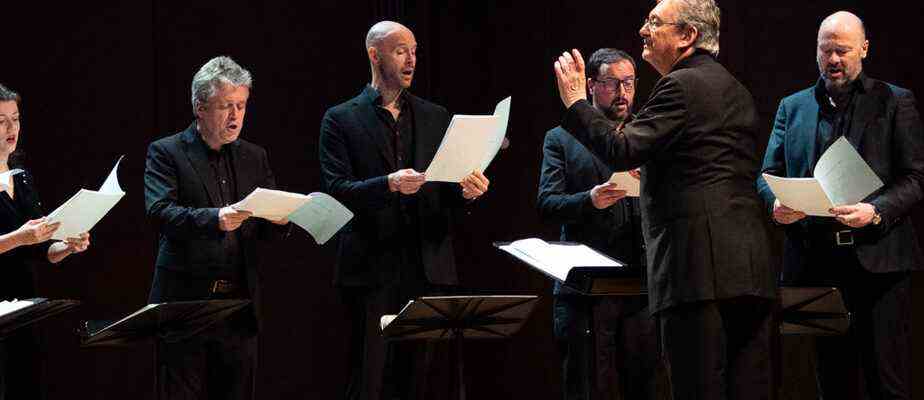A critic always hesitates to speak of perfection. But that’s what Bourgie Hall listeners were treated to on Tuesday night with the legendary Tallis Scholars.
It must be said that the British chamber choir has accustomed us to excellence with its many recordings made under its own label, Gimel. Several have become absolute references.
For its visit to Montreal, the choir had prepared a program composed essentially of works from the 16the century devoted to the Virgin, with a brief foray into a more contemporary repertoire.
A variable-geometry ensemble, the Tallis Scholars were nine (three sopranos and two other voices) on the Bourgie Hall stage, in addition to Peter Phillips, their lifelong leader who created the group at the age of 20. in 1973!

PHOTO CATHERINE LEFEBVRE, THE PRESS
Chief Peter Phillips
From the first chord of the antiphon Alma redemptoris mater by Roland de Lassus, who opened the evening, everything is already in place. There is no need, as with many ensembles – vocal or not – to take a few minutes to find your bearings.
Unlike many British ensembles which favor an ethereal sound, sometimes bordering on caricature, the Tallis have flesh, without overdoing it either.
As a matter of style, the vibrato is almost non-existent, the expression being achieved more with the swelling of the sound.
Even if the acoustics of the former Erskine and American church prove to be a little dry for this kind of repertoire accustomed to resounding under high vaults, the fading of the voices is constant during the evening, helped by the direction as much minimalist as expressive from the regular conductor, who gives pride of place to vocal continuity. We hear all the consonants, but these always fit into a very strong line.
Capable of power
The continuous and exhilarating tension created by Phillips right up to the word “surrexit” (he is resurrected) in the magnificent motet Maria Magdalene and altera Maria by Francisco Guerrero is one of the many examples of the consummate art of the Tallis in giving meaning to the combination of verb and sound.
The sopranos are also distinguished – among others in the above-named Guerrero – by the purity of their timbre, which never takes over. The duet between one of the sopranos and one of the altos in the Agnus Dei of the Mass Ave Maris Stella by Josquin des Prés also reveals the quality of the individual female voices. The public hardly dares to breathe in front of so much beauty.
But it feels more like the tenors are the backbone of the whole thing, especially with the solid voice of Simon Wall.
If they are capable of the greatest gentleness, as in theAve virgo sanctissima of Guerrero, the Tallis are also capable of power, as for the vibrant end of the Virgencita by Arvo Pärt (a piece in Spanish composed just ten years ago) and the monumental motet Virgo prudentissima by Heinrich Isaac, who ended the concert.
Chic idea also to follow theAve virgo of Guerrero by the very colorful realization of the same text by Matthew Martin, a British composer of today. The very brief and consonant Hail Mary by Stravinsky formed a brief oasis between the Martin and the Pärt, remarkable for the dynamic and vocal range it demands of the choir.
The choir gave an encore of another antiphon by Lassus, theAve regina coelorumfollowing which the public, numerous and enthusiastic, judiciously acclaimed him.
